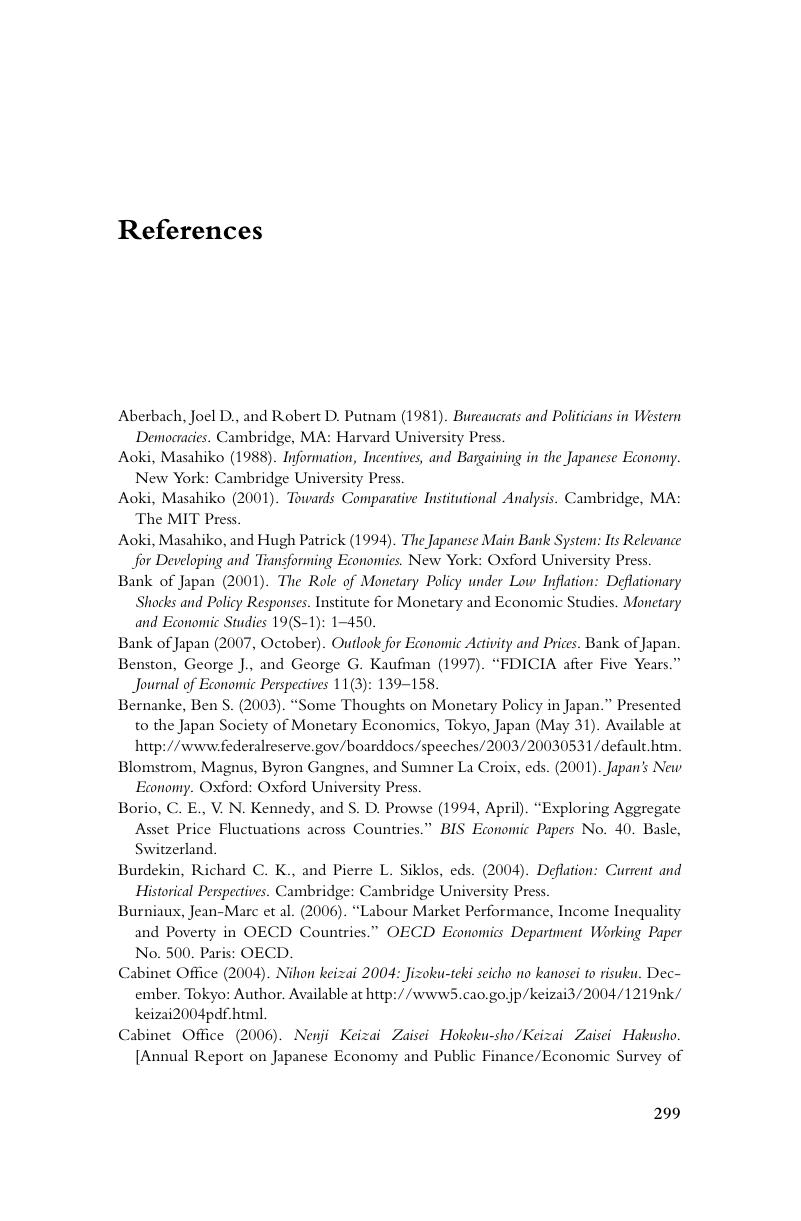Book contents
- Frontmatter
- Contents
- Preface
- Abbreviations
- 1 Introduction and Overview
- 2 Economic and Political Institutions in the 1970s
- 3 The “High-Water Mark” of the Japanese Economy – A “Model” of Financial Liberalization: 1980 to 1985
- 4 An Accident Waiting to Happen – The Bubble Economy from 1985 to 1990
- 5 Economic and Financial Distress from 1990 to 2001 and the Turning Point
- 6 Why Did the Economic and Financial Distress Last So Long?
- 7 The Transition of Political Institutions in the 1990s and the New Century
- 8 Political Economy of Japan's Fiscal Program
- 9 Koizumi Administration's Reform in Broad Perspective: Fiscal Consolidation and Market Reform
- 10 Japan's Corporate Governance, Labor Practices, and Citizens' Social and Economic Life at the Beginning of the New Century
- 11 Japanese Political Economy in the First Decade of the New Century
- References
- Index
- References
References
Published online by Cambridge University Press: 06 July 2010
- Frontmatter
- Contents
- Preface
- Abbreviations
- 1 Introduction and Overview
- 2 Economic and Political Institutions in the 1970s
- 3 The “High-Water Mark” of the Japanese Economy – A “Model” of Financial Liberalization: 1980 to 1985
- 4 An Accident Waiting to Happen – The Bubble Economy from 1985 to 1990
- 5 Economic and Financial Distress from 1990 to 2001 and the Turning Point
- 6 Why Did the Economic and Financial Distress Last So Long?
- 7 The Transition of Political Institutions in the 1990s and the New Century
- 8 Political Economy of Japan's Fiscal Program
- 9 Koizumi Administration's Reform in Broad Perspective: Fiscal Consolidation and Market Reform
- 10 Japan's Corporate Governance, Labor Practices, and Citizens' Social and Economic Life at the Beginning of the New Century
- 11 Japanese Political Economy in the First Decade of the New Century
- References
- Index
- References
Summary

- Type
- Chapter
- Information
- Japan since 1980 , pp. 299 - 306Publisher: Cambridge University PressPrint publication year: 2008



